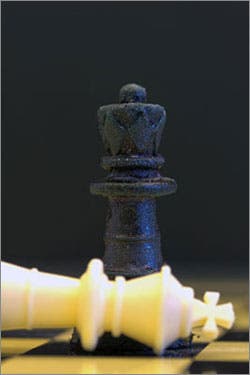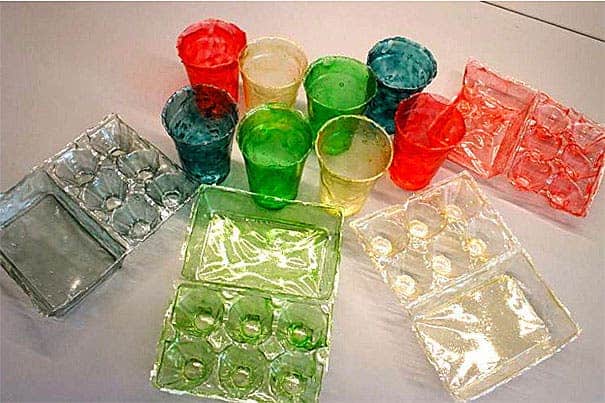
The Wyss Institute researchers molded a series of chess pieces made of their chitosan bioplastic, demonstrating a new way towards mass-manufacturing large 3D objects with complex shapes made of fully compostable materials. Credit: Harvard’s Wyss Institute
In the US alone, some 34 million tons of plastic waste is generated every year, of which only seven percent gets recycled. The good thing about plastic is that it’s sturdy, cheap and easy to make – these are also its biggest downsides. Plastic is so well built that it can last up to 1,000 years in landslides without degrading, affecting soil, plant life and virtually causing an ecological disaster. When discarded in the sea, plastic can kill marine life . It’s estimated 100 million tons are circulating in vast oceanic gyres, staying afloat.
What are our options then? Society today is so dependent on plastic that any attempt to curb it’s use will be destined for failure, but what if you could use a material that behaves like plastic, yet is infinitely more safe? You might have come across bioplastics lately, a form of plastic made from renewable cellulose which manufacturers claim is safe for the environment. This isn’t the best alternative since bioplastics made from renewable cellulose don’t degrade effectively and completely in any environment and can only be used for a restricted range of applications like packaging material or simple containers for food and drink.
A safer kind of plastic
Researchers at Harvard’s Wyss Institute for Biologically Inspired Engineering claim the bioplastic they developed from shrimp shells is much more versatile, it’s easier degradable and actually promotes plant growth. The bioplastic is made from chitosan, a form of chitin — the second-most abundant organic material on Earth – also the main ingredient in the hardy shells of crustaceans, the armorlike cuticles of insects, and even the flexible wings of butterflies.
[ALSO READ] In Canada, bees are making hives out of plastic
Named ‘shrilk’, the bioplastic is cheaply and easily fabricated by a novel method that preserves chitosan’s strong mechanical properties, marking the first time engineers are able to manufacture 3-D objects with complex shapes using traditional casting or injection-molding techniques using this renewable material.
“There is an urgent need in many industries for sustainable materials that can be mass produced,” Wyss Director Donald E. Ingber said in March. “Our scalable manufacturing method shows that chitosan, which is readily available and inexpensive, can serve as a viable bioplastic that could potentially be used instead of conventional plastics for numerous industrial applications.”

Turning shrimp shells into plastic: Harvard’s Wyss Institute comes up with fully degradable bioplastic. Photo: Wyss Institute
Once discarded into the landfills, the shrilk breaks down in a matter of weeks, instead of hundreds of years compared to plastic. Even more amazing, when the shrilk degrades it releases nutrients into the soil helping promote plant growth, as demonstrated by an experiment in which the researchers grew a California black-eyed pea plant in soil enriched with its chitosan bioplastic.
According to the paper published in the journal Macromolecular Materials & Engineering, shrilk could be used to make trash bags, packaging, and diapers.









